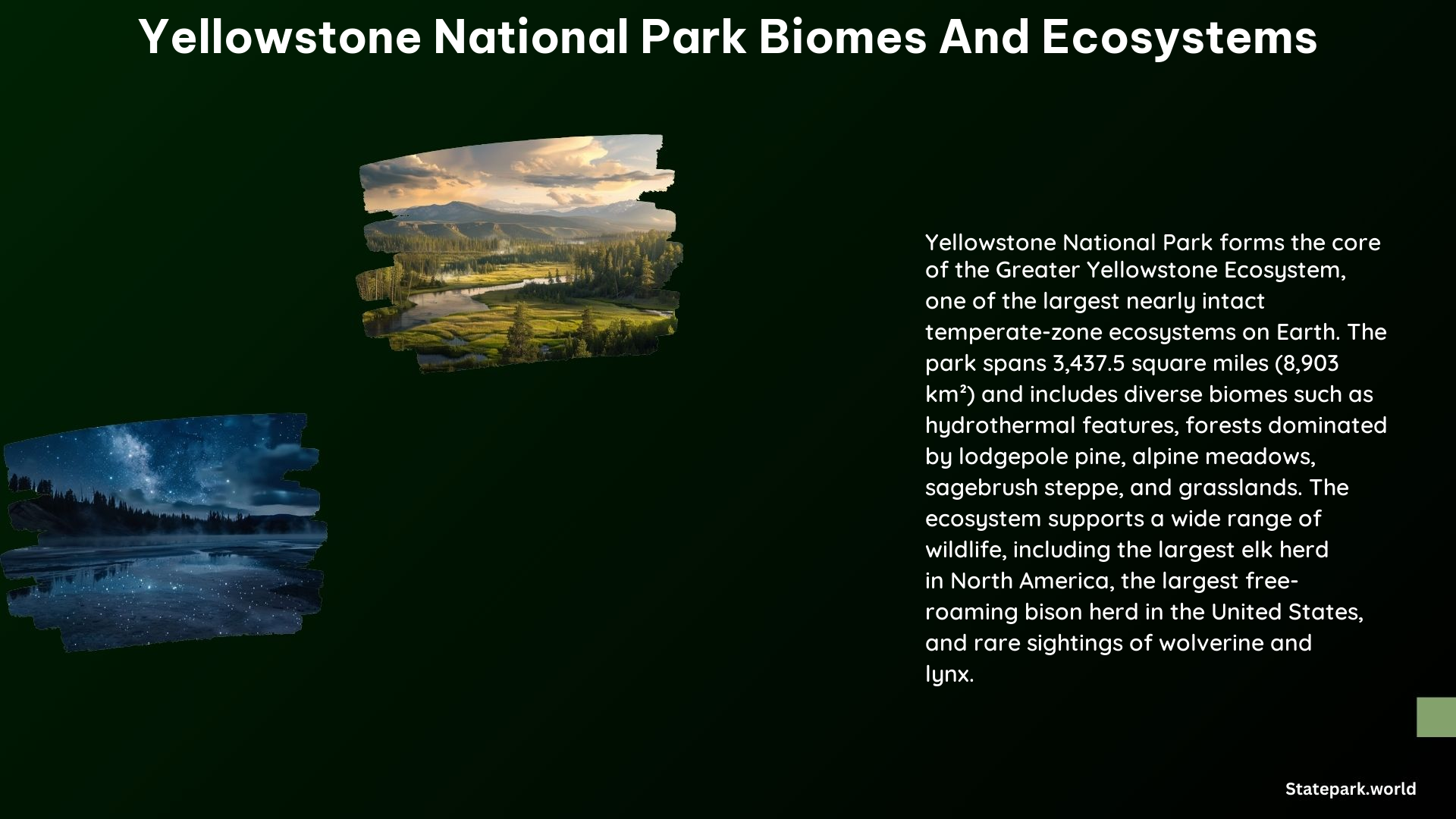Yellowstone National Park is a vast and captivating wilderness, home to a remarkable array of biomes and ecosystems that contribute to its unparalleled natural beauty and ecological significance. As part of the Greater Yellowstone Ecosystem, one of the largest nearly intact temperate-zone ecosystems on Earth, Yellowstone offers a unique glimpse into the intricate web of life that thrives within its boundaries.
Main Biomes Found in Yellowstone National Park
Yellowstone National Park is a mosaic of diverse biomes, each with its own unique characteristics and inhabitants. The park’s terrain is dominated by the following biomes:
- Terrestrial Biome: Yellowstone’s terrestrial biome is characterized by a range of ecosystems, including:
- Lodgepole pine forests: These dense, evergreen forests cover much of the park’s landscape.
- Sagebrush steppe: Lower-elevation areas are home to expansive grasslands and sagebrush communities.
-
Alpine meadows: High-elevation areas feature lush, flower-filled meadows and rugged, rocky terrain.
-
Aquatic Biome: Yellowstone is home to an abundance of aquatic habitats, including:
- Lakes and ponds: The park contains over 600 lakes and ponds, providing critical habitat for a variety of aquatic species.
-
Rivers and streams: Numerous rivers and streams, such as the Yellowstone River, flow through the park, supporting diverse aquatic ecosystems.
-
Microbial Biome: Yellowstone’s unique hydrothermal features, including hot springs and geysers, host a remarkable microbial community. These thermophilic (heat-loving) bacteria and archaea thrive in the extreme temperatures and chemical conditions found in these geothermal areas.
The Greater Yellowstone Ecosystem and Biodiversity Preservation

The Greater Yellowstone Ecosystem, of which Yellowstone National Park is a part, is a vast and interconnected landscape that supports an incredible diversity of wildlife. This ecosystem is home to the largest concentration of wildlife in the lower 48 states, including iconic species such as elk, bison, grizzly bears, wolverines, and lynx.
The preservation of biodiversity within the Greater Yellowstone Ecosystem is a complex and ongoing challenge, as the region faces a variety of threats, including:
- Climate Change: Rising temperatures and shifting precipitation patterns are expected to significantly alter the ecosystem, affecting the distribution and habitat quality for many species.
- Invasive Species: The introduction of non-native species, such as the fungal rust disease affecting whitebark pines, can disrupt the delicate balance of the ecosystem.
- Land Use: Human activities outside the park, such as development, resource extraction, and recreation, can have far-reaching impacts on the ecological processes within the park, emphasizing the need for coordinated management across political boundaries.
Management Challenges and Conservation Efforts
Preserving the ecological integrity of the Greater Yellowstone Ecosystem requires a collaborative effort among local, state, federal, and tribal governments, as well as private landowners and conservation organizations. This multi-faceted approach aims to address the various threats and challenges facing the region, including:
- Climate Change Adaptation: Developing strategies to mitigate the effects of climate change, such as monitoring species distributions and implementing habitat restoration projects.
- Invasive Species Management: Implementing control and eradication programs to limit the spread of non-native species and protect native ecosystems.
- Coordinated Land Use Planning: Promoting sustainable land use practices and ensuring that development and resource extraction activities outside the park boundaries do not compromise the ecological health of the Greater Yellowstone Ecosystem.
By working together to address these complex challenges, the managers and stakeholders of the Greater Yellowstone Ecosystem strive to preserve the region’s unparalleled natural wonders and maintain the delicate balance of its diverse biomes and ecosystems for generations to come.
References
- National Park Service. (2023). Greater Yellowstone Ecosystem. Retrieved from https://www.nps.gov/yell/learn/upload/3_RI_2023_GYE_508web.pdf
- National Park Service. (2023). Nature. Retrieved from https://www.nps.gov/yell/learn/nature/index.htm
- Visit Big Sky. (2016). What Is The Greater Yellowstone Ecosystem? Retrieved from https://www.visitbigsky.com/articles/post/what-is-the-greater-yellowstone-ecosystem/
- Wikipedia. (n.d.). Greater Yellowstone Ecosystem. Retrieved from https://en.wikipedia.org/wiki/Greater_Yellowstone_Ecosystem
- National Park Service. (2020). Greater Yellowstone Ecosystem. Retrieved from https://www.nps.gov/yell/learn/nature/greater-yellowstone-ecosystem.htm.
